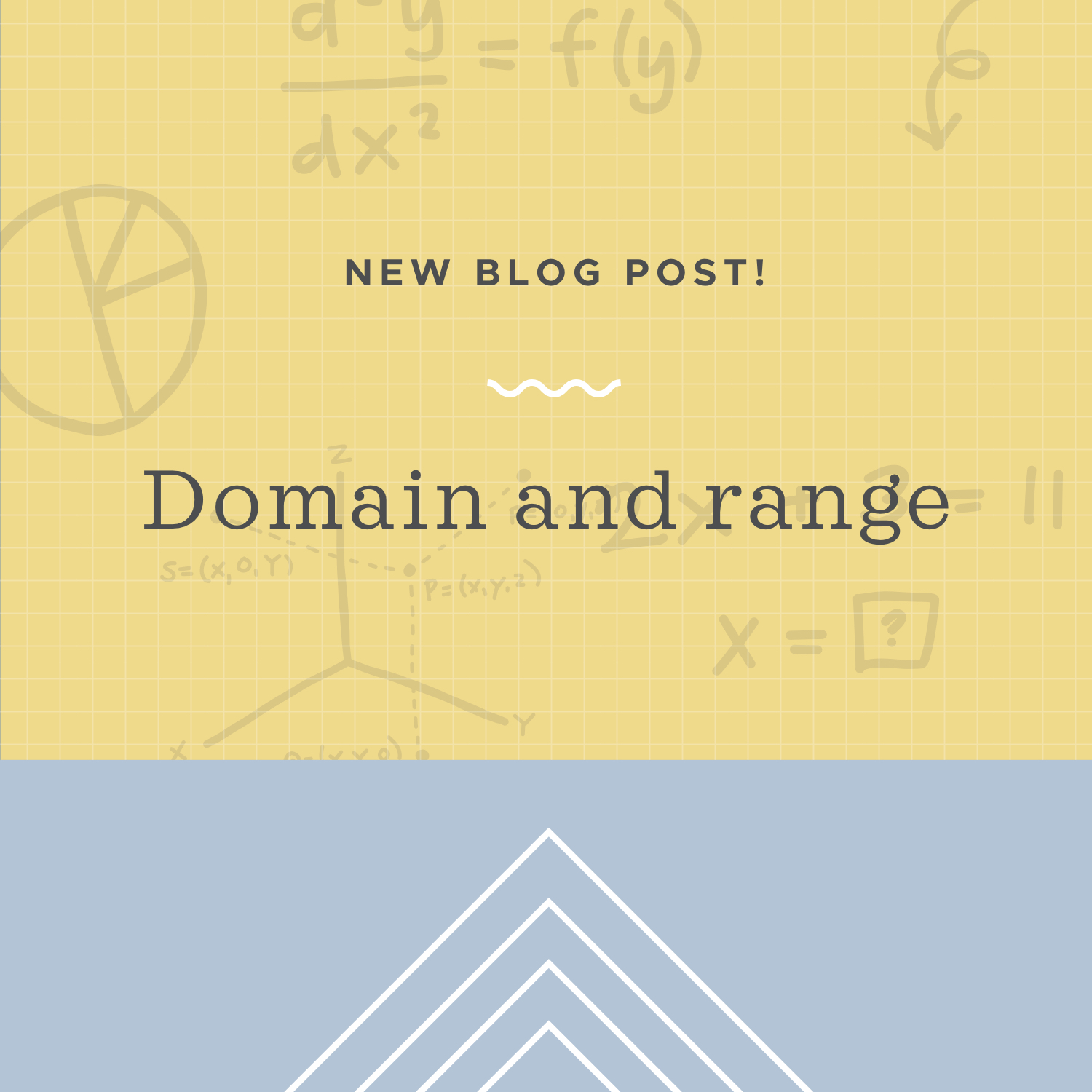How to find the domain and range of a function
What are the domain and range of a function?
We often define a function by an equation in which the variables ???x??? and ???y??? represent real numbers, and where “???y???” (just the variable ???y???) is all by itself on one side of the equation, and an expression that contains no variable other than ???x??? is on the other side. An example of an equation like that is ???y=x^2???.
Hi! I'm krista.
I create online courses to help you rock your math class. Read more.
Think of the domain of a function as all the real numbers you can plug in for ???x??? without causing the function to be undefined. Things to look out for are values of ???x??? that would cause a fraction’s denominator to equal ???0??? and values that would force a negative number under a square root sign.
The range of a function is then the real numbers that would result for ???y??? from plugging in the real numbers in the domain for ???x???. In other words, the domain is all ???x???-values or inputs of a function, and the range is all ???y???-values or outputs of a function.
There are a few functions we’ll use a lot that have domain restrictions:
In ???y=\frac{1}{x}???, ???x??? cannot equal ???0???
In ???y=\sqrt{x}???, ???x??? must be nonnegative (either positive or ???0???)
How to find a function’s domain and range
Take the course
Want to learn more about Algebra 1? I have a step-by-step course for that. :)
Finding the domain and range of a rational function
Example
Describe the domain and range of the function.
???f(x)=x+\frac{2}{x}???
In this function, ???x??? cannot be equal to ???0???, because that value causes the denominator of the fraction to equal ???0???. Because setting ???x??? equal to ???0??? is the only way to make the function undefined, the domain of the function is all ???x\neq 0???.
Let’s look at another example where the function is defined by a set of coordinate points.
In other words, the domain is all x-values or inputs of a function, and the range is all y-values or outputs of a function.
Example
What is the domain and range of the set.
???(-2,4)???, ???(1, 3)???, ???(2,5)???, ???(4,3)???
The domain is all ???x???-values and remember that coordinates are ???(x,y)???. Therefore the domain is
Domain: ???-2,\ 1,\ 2,\ 4???
The range is all ???y???-values.
Range: ???4,\ 3,\ 5,\ 3???
Except that we don’t need to list numbers that are repeated more than once, and we want to arrange the numbers in ascending order, so we can give the range as
Range: ???3,\ 4,\ 5???
Let’s try another example of domain and range.
Example
What is the domain and range of the function?
???f(x)=\frac{6}{x}???
In this example we have ???x??? in the denominator, which means we’re dividing by ???x???. We need to remember that we can’t divide by ???0???, but ???x??? could be any number except ???0???. So the domain is all real numbers except ???0???.
Domain: ???(-\infty,0)\cup(0,\infty)???
Since ???x\neq0???, there will be an asymptote at ???x=0???. If we think about the outputs of ???6/x???, you’ll realize that there can’t possibly be an output of ???0???. However any other number could be an output. So the range is all real numbers except ???0???.
Range: ???(-\infty,0)\cup(0,\infty)???






